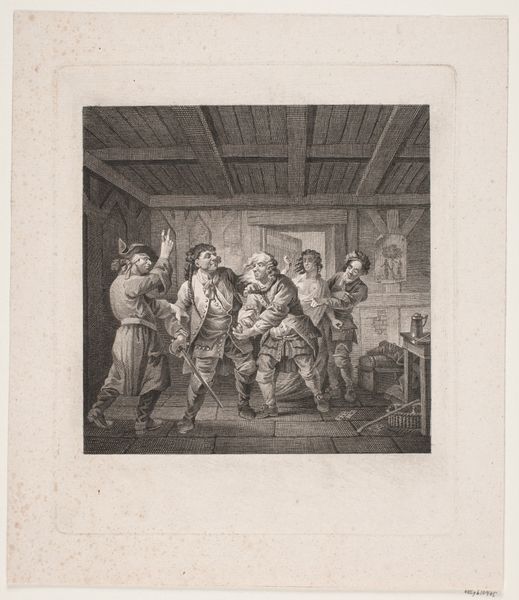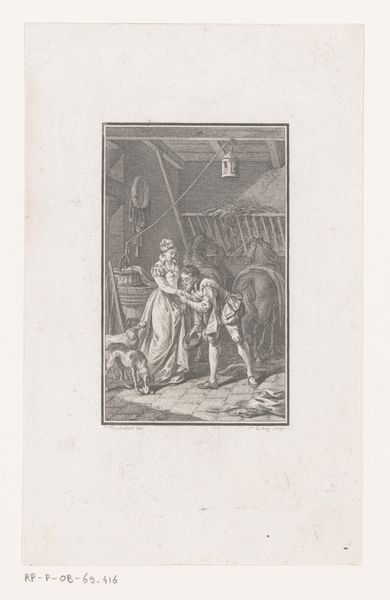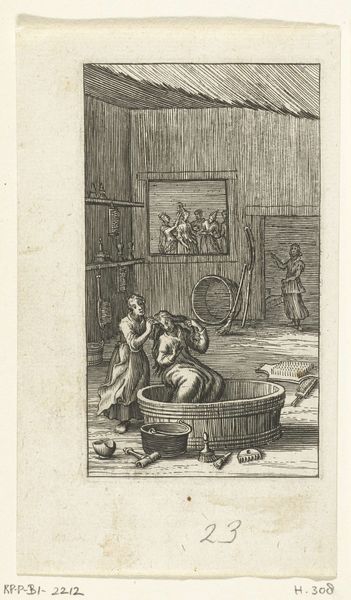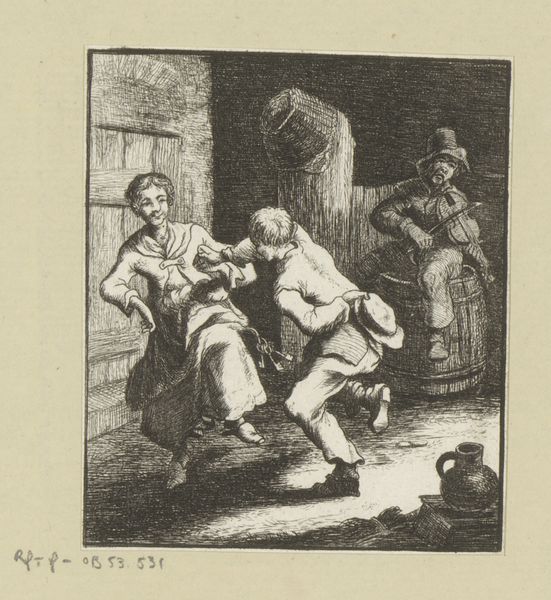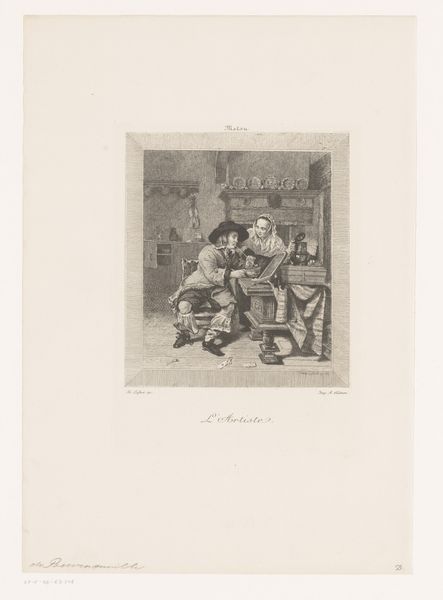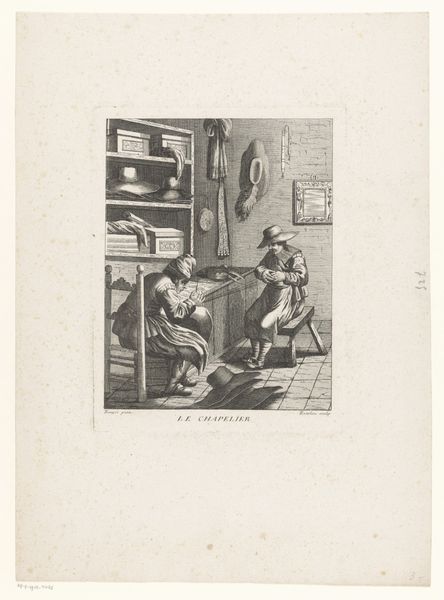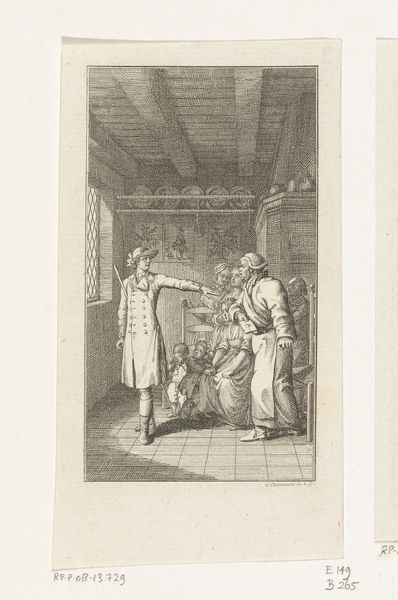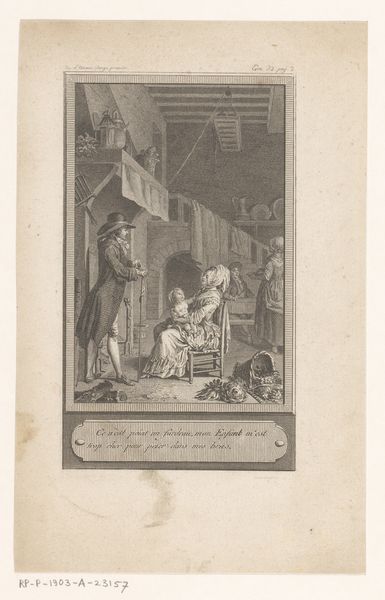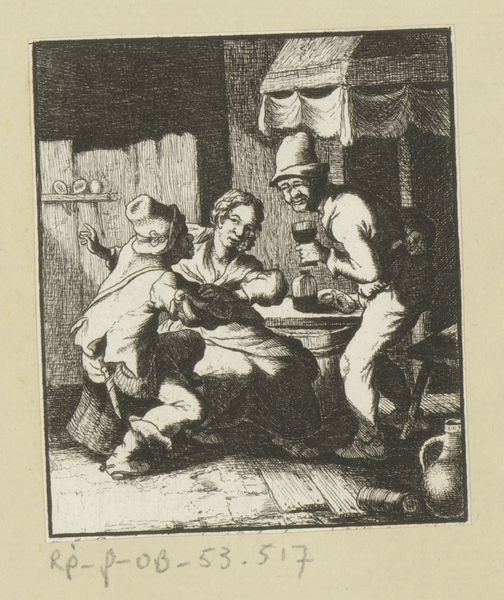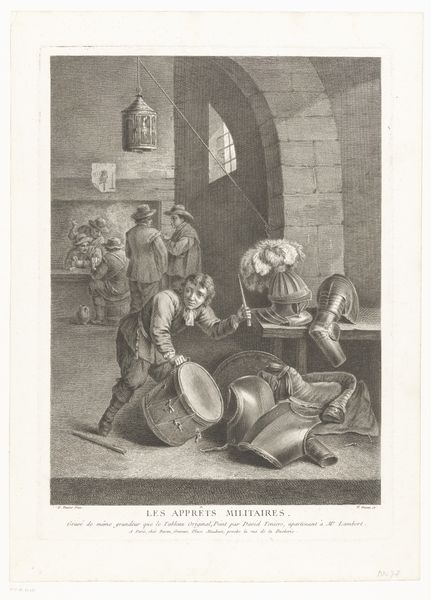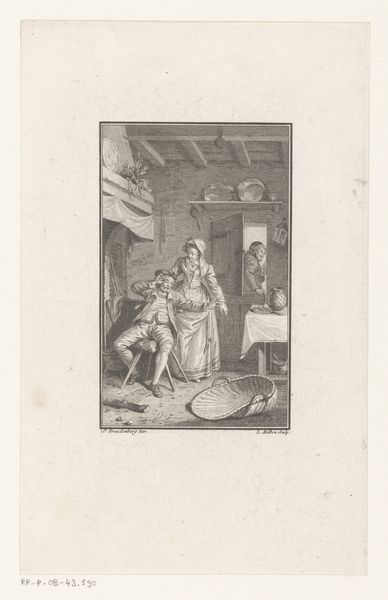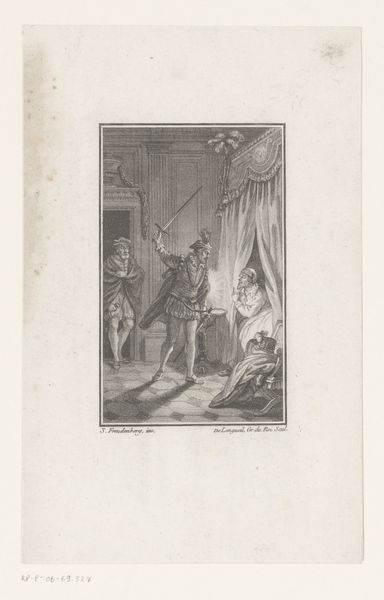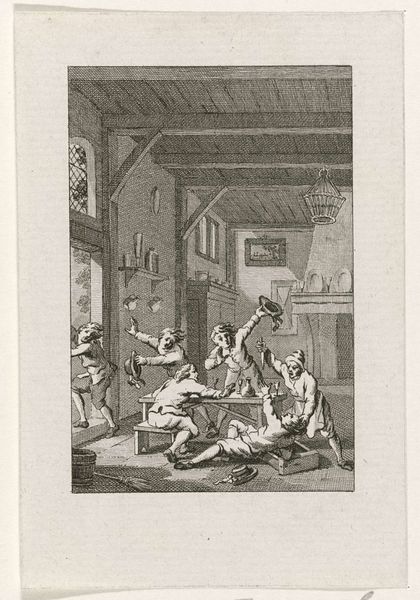
Dimensions: height 233 mm, width 179 mm
Copyright: Rijks Museum: Open Domain
Curator: Here we have "Kuiper", an engraving created sometime between 1750 and 1850. It offers a detailed depiction of a cooper's workshop. What strikes you initially about this image? Editor: It’s quite immersive, even though it’s a print. The detail invites you right into the workshop, the textures almost palpable despite the limitations of the monochrome engraving. The light, though subtle, emphasizes the figures. It feels active. Curator: Indeed. One of the interesting layers here is the depiction of labor and class. Cooperage, barrel-making, was a critical trade, especially during this period when barrels were essential for storing and transporting goods. The scene depicts this labor as something intrinsic to a historical continuum, connecting past modes of production to contemporary realities and ideas surrounding class and gender divisions. Editor: I'm immediately drawn to the tools. Notice the various hoops and implements arranged around the workshop—each speaks to the steps involved in crafting a barrel. The central barrel, seemingly nearing completion, is such a powerful symbol of industry and skill. It's fascinating how these ordinary objects can accrue so much meaning. The ladder could signify, quite simply, the levels of skill in manual trades. Curator: Exactly! What this reveals is the societal valuing of material objects and labor which intersect with political economy. Editor: And consider the repetition of circular forms—the barrels, the hanging hoops, the coils of rope. Circles often symbolize continuity, wholeness. Perhaps the artist subtly comments on the ongoing cycle of production and consumption, a rhythm fundamental to this historical moment? Curator: Certainly. The engraving medium, itself a method of reproduction and dissemination of knowledge, adds another layer. By circulating this image, there’s a value associated to the documentation of labor, but simultaneously allows access for those outside the working classes. Editor: Yes. Ultimately, “Kuiper” is a scene both of its time and evocative for our time, demonstrating the interplay between people, tools, and the repetitive labor needed to shape objects that shape lives. Curator: Indeed. Reflecting on “Kuiper," the artwork is rooted in historical modes of production that have broader relevance to thinking about how social classes and contemporary labor shape our contemporary socio-political realities.
Comments
No comments
Be the first to comment and join the conversation on the ultimate creative platform.
